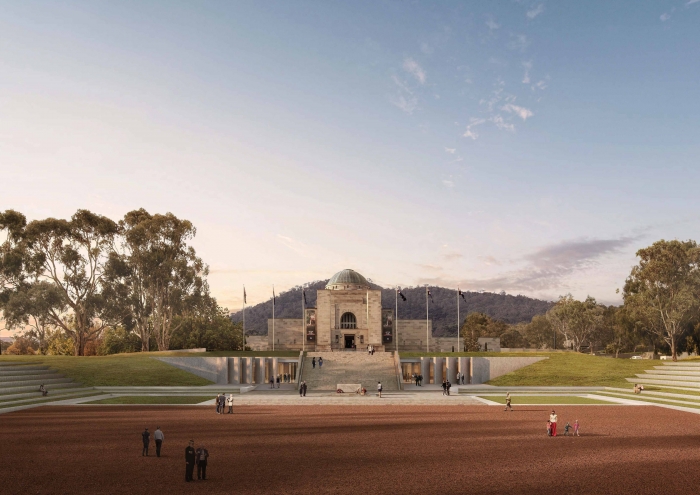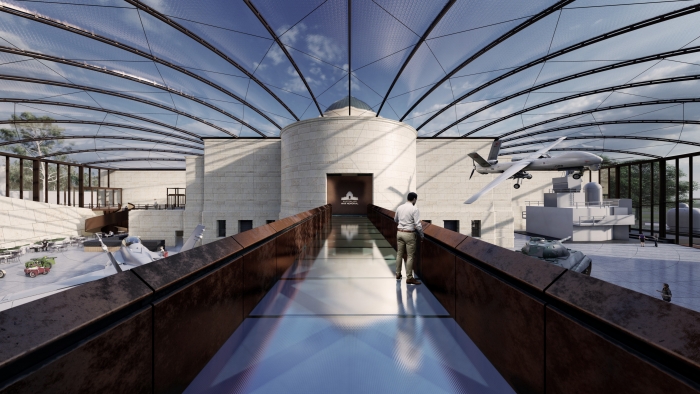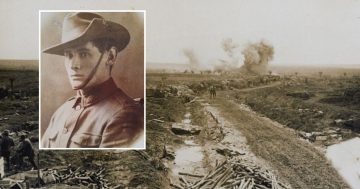
An artist’s impression of the redeveloped Australian War Memorial showing its new southern entrance and bigger parade ground. Images: AWM.
The Federal Government’s own heritage watchdog has come out in opposition to the Australian War Memorial’s $500 million expansion plans.
The Australian Heritage Council says that while the Memorial’s motivation to create extra space to tell the story of recent and ongoing military operations is commendable, it believes that the listed heritage values of the site will be impacted and the Memorial should reconsider its plans.
The official plans for the controversial redevelopment include a new southern underground entrance, refurbishment of the main building, a new larger Anzac Hall connected to the main building, a glazed link, a bigger CEW Bean Building and public realm works.
The council highlights four major elements of the expansion that the Memorial should reconsider, including the demolition of Anzac Hall which the Heritage Impact Statement from Hector Abraham Architects rates as being a significant negative impact.
It also identifies the redesign and expansion of the Parade Ground; the inclusion of the Oculus, mainly because of the removal of a direct line of access into the Memorial building; the inclusion of an external lift; and the expansion of the CEW Bean building.
Council chair, former Liberal minister David Kemp says in a recent submission to the EPBC consultation that the Memorial had not considered alternatives to the expansion plans to meeting a need for more space, and that an expansion to display large objects such as aircraft and submarines was not sustainable from a heritage point of view.
He says the Memorial appears to have not addressed options such as operational and other functional changes that could minimise the need for additional space.
”These include different and technological methods of interpretation and museum display, as well as opportunities to introduce a more sustainable visitation strategy,” Mr Kemp says.
“Both are important aspects of a comprehensive heritage management programme and should be considered as key approaches to improving capacity.”

A view from the glazed link.
He says the impacts of the structural changes on the landscape and ”micro-setting” of the Memorial have also not been considered, particularly in regards to a bigger CEW Bean building and reduced natural space.
”This action imposes a considerable impact on and imbalance of landscape design within the site, and can be seen to compromise the relationship between the natural bushland setting of the Memorial and its continuity with Mount Ainslie,” Mr Kemp says.
He says the Memorial fails to acknowledge the combined impact of all the proposed changes.
”Regrettably, the Council cannot support the conclusion that the proposed redevelopment will not have a serious impact on the listed heritage values of the site and recommends that the matters above be given serious attention,” Mr Kemp concludes.
Overall, the Heritage Impact Statement released in late September, while acknowledging the loss of Anzac Hall, finds the expansion will be generally positive, saying the new Anzac Hall, glazed link and the bigger Bean Centre all have merit in their own right.
But it does say ”care must be taken to ensure the landscape qualities of the eastern precinct are not overly diminished”, an impact Mr Kemp argues the proposed expansion will already have.
The new southern entrance is also generally positive, the Statement says.
”The proposal as a whole is acceptable in heritage terms,” it concludes.
The Memorial said that after consultation it had made than 50 changes to the detailed design, documentation and other elements of the proposal that was put forward in July, and these were now being considered by the Department of Agriculture, Water and Environment (DAWE) and can be viewed on the Memorial’s website.
It had proposed 17 formal heritage mitigation strategies as part of its EPBC Act documentation, supported by the Memorial’s comprehensive heritage management strategy, to ensure the best possible heritage outcomes.
Over the past 25 years, the Memorial had already re-purposed more than 1,500 square metres of space and could not find more without further expansion.
It would continue to consult with the community and stakeholders.
Original Article published by Ian Bushnell on The RiotACT.








